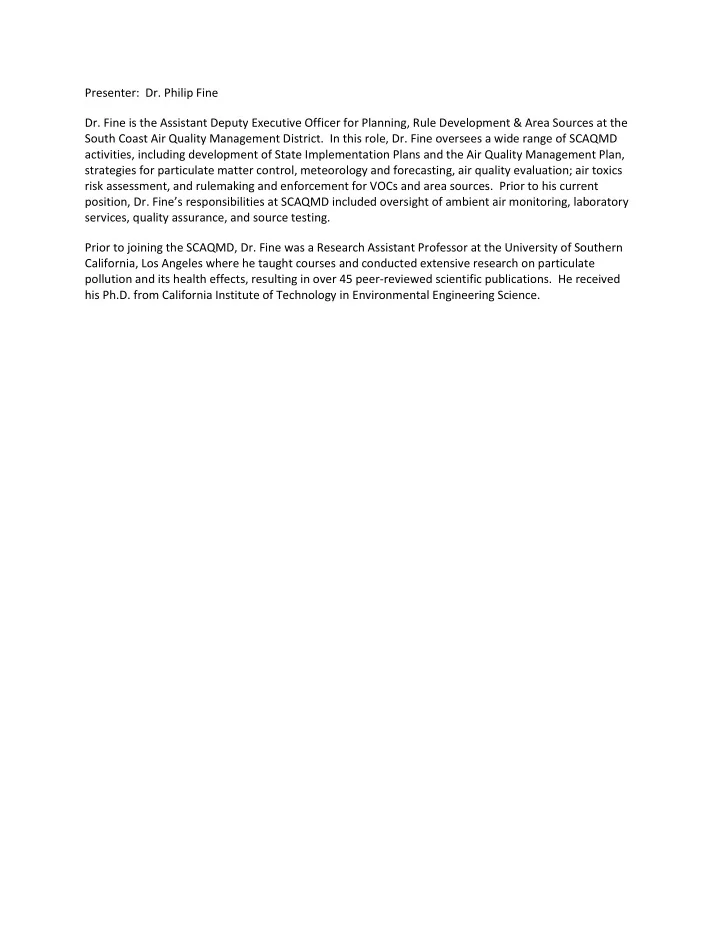

Presenter: Dr. Philip Fine Dr. Fine is the Assistant Deputy Executive Officer for Planning, Rule Development & Area Sources at the South Coast Air Quality Management District. In this role, Dr. Fine oversees a wide range of SCAQMD activities, including development of State Implementation Plans and the Air Quality Management Plan, strategies for particulate matter control, meteorology and forecasting, air quality evaluation; air toxics risk assessment, and rulemaking and enforcement for VOCs and area sources. Prior to his current p osition, Dr. Fine’s responsibilities at SCAQMD included oversight of ambient air monitoring, laboratory services, quality assurance, and source testing. Prior to joining the SCAQMD, Dr. Fine was a Research Assistant Professor at the University of Southern California, Los Angeles where he taught courses and conducted extensive research on particulate pollution and its health effects, resulting in over 45 peer-reviewed scientific publications. He received his Ph.D. from California Institute of Technology in Environmental Engineering Science.
Air Quality Challenges and the Benefits of Alternative Aviation Fuels Philip M. Fine, Ph.D. Assistant Deputy Executive Officer Future of Alternative Fuels Workshop Santa Monica Airport Commission January 26 , 2015
The Ground-level Ozone Challenge NOx Reductions Needed Beyond Adopted Standards
Top NOx Source Categories (2023) (Final 2012 AQMP) 75 51 NOx ( tons/day ) 50 43 41 27 25 22 16 16 15 14 13 13 0 Heavy-Duty Off-Road Ships & RECLAIM** Locomotives Aircraft Residential Heavy-Duty Passenger Med-Duty Light Duty Diesel Equipment Commercial Fuel Gasoline Cars Gasoline Trucks/SUVs Trucks Boats* Combustion Trucks Vehicles * Oceangoing vessels = 32 tons/day **RECLAIM: 320 largest stationary sources, including all refineries and power plants 3 Source: 2007 South Coast Air Quality Management Plan
The Air Toxic Challenge… MATES IV Modeled Air Toxics Risk
… is Larger Than Previously Estimated MATES IV Modeled Risk with Proposed OEHHA Methodology Inhalation Risks go up by factor of about 2.7
The Climate Challenge
How Alternative Aviation Fuels Can Help • General Aviation Fuel • Quickly work towards eliminating lead • Alternative Jet Fuels have generally focused on climate, using renewable (non-fossil) carbon sources • Should also consider other air quality challenges: • Lower NOx emissions • Lower PM emissions, including ultrafine particles • Lower VOC emissions • Lower SOx emissions • Lower Black Carbon emissions (climate)
Recommend
More recommend